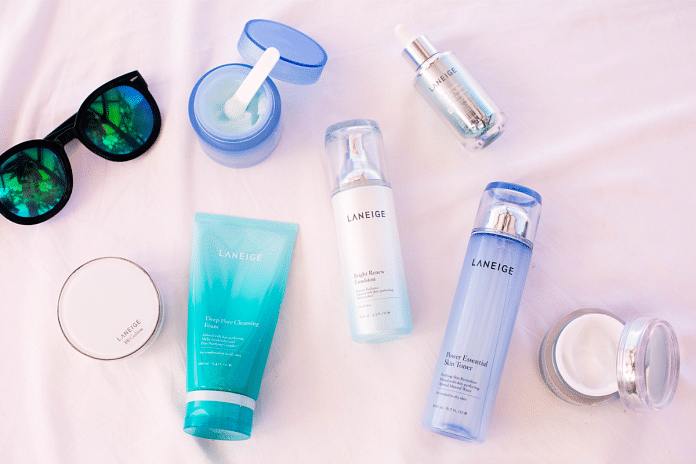Recently, I was at the tail end of a consultation with a long-term patient when she took out her phone and showed me her screen. On the display was a photo of a popular South Korean actress. Then she asked me something that I had heard a thousand times before: How can I get my skin to look like this?
The Korean Wave has taken India by storm and its influence on the cosmetic industry is no exception. Advertisements and reels have flooded social media, and now, many people want to have ‘South Korean’ flawless skin. But before following their skincare routines, it’s important to understand some basics of biology first.
Skin types are categorised according to the Fitzpatrick scale, which was developed to determine the amount of UV exposure a particular type of skin can take before becoming phototoxic, the condition in which skin can become extremely sensitive to light.
The scale, which delineates six types of skin, has since evolved to help dermatologists determine melanin constitution in the skin and use phototherapy (or UV light therapy) to treat different kinds of skin conditions including eczema.
Indian skin ranges between Type III and VI, indicating that it is more prone to tanning and less likely to get sunburnt. Such types of skin are also prone to pigmentation. South Korean skin falls into the same categories on the Fitzpatrick scale, but there is one significant difference — it is less likely to develop pigmentation. That is why Korean skincare works differently for South Koreans and Indians.
But skincare goes beyond skin types — the secret to flawless skin also partly depends on the skincare routines perfected over decades.
Here’s the secret
In South Korea, traditional skincare remedies are based on naturally occurring products: Green tea, propolis or bee glue, snail slime, and bamboo extracts are some of the most common ingredients used through the generations. These ingredients, free of harsh chemicals and toxins, nourish skin and keep it healthy. Moreover, when it comes to skincare and makeup, South Koreans prioritise the former, knowing how important it is to keep skin healthy.
The 10-step South Korean routine, popularised across social media platforms and K dramas, has become a rage in India over the last few years. The science behind it is simple: Take skincare down to the deepest layer and follow the routine on a regular basis. While the 10-step routine may not work for everyone, it gives a message — taking care of your skin should be a priority no matter how busy you are.
This principle is reflected in South Koreans’ commitment to skincare. Reducing pigmentation and maintaining a healthy glow are priorities, while skin tightening and reducing acne scarring are highly sought-after services.
The right skincare for Indians
For many people, the 10-step routine doesn’t make an iota of a difference to their skin. This is especially true for those with pigmented skin, allergies, or sensitive skin. In that case, it is time to go local.
India too has thrived on natural remedies to help the body and mind. An untapped resource is spring water, which should be promoted as a treatment. I once used spring water in Sikkim to treat a family member’s eczema. Seeing the marked difference, I made an appeal to the health ministry and AYUSH and asked them to suggest the treatment on a large scale. Today, even though many companies and experts are experimenting with more natural substances, we are far off from making use of spring water as an affordable and accessible treatment option for skin ailments.
So what can you use that’s widely available, is devoid of chemicals, and gives good results? To start with, sandalwood powder — both red and white — suits Indian skin to a tee, giving it that desirable glass-like finish. Using natural cleansers, water-based and fermented skin products, creams containing copper peptides, and applying serums with hyaluronic acid before a moisturiser can go a long way.
Adapt the South Korean skin routine for you
You can incorporate Korean skincare routine into your everyday schedule — just make sure you follow it religiously.
Here’s how it goes: Cleanser (an oil-based cleanser followed by a foam cleanser), exfoliator, sheet mask, toner, essence, serum, eye cream, and face cream.
Exfoliating on a daily basis is not recommended for all skin types and can worsen breakouts. Instead, I suggest exfoliating 2-3 times a week. A sheet mask gives a temporary hydration benefit. For someone looking to maintain a long-term skincare routine, vitamin infusion therapy or vitamin distribution with a handheld machine are better bets. Toners are either alcohol or water-based, the latter suits Indian skin better.
And most importantly, hydrated skin is a happy skin. Make sure to drink adequate amounts of water, use sunscreen liberally, and remove makeup before sleeping.
South Korean skin looks almost unrealistic. In some cases, it is truly too good to be true — advertisements promote utopian skincare goals. Healthy skin isn’t picture-perfect and not out-of-reach at all. Just start with the ingredients in your kitchen, for there’s no place like home.
Dr Deepali Bhardwaj is a dermatologist, anti-allergy specialist, laser surgeon and internationally trained aesthetician. She tweets @dermatdoc. Views are personal.
(Edited by Humra Laeeq)



